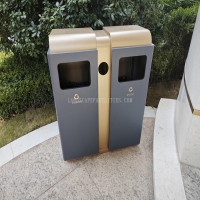Welcome to the website for landscape facilities products and knowledge.
How do landscape tables balance aesthetic appeal with functional requirements in urban planning?
In the realm of urban planning, landscape tables serve as a unique intersection of art and utility, seamlessly blending aesthetic appeal with functional requirements. These versatile elements are designed to enhance public spaces while addressing practical needs such as seating, social interaction, and environmental harmony.
Aesthetic appeal is achieved through thoughtful design choices, including materials, shapes, and colors that complement the surrounding environment. Landscape tables often incorporate natural elements like wood or stone, creating a visually pleasing contrast with urban settings. At the same time, their functionality is prioritized—durable materials ensure longevity, ergonomic designs promote comfort, and adaptable layouts cater to diverse public activities.
Urban planners leverage landscape tables to foster community engagement. By providing inviting spaces for relaxation or work, these structures encourage social interaction and improve the overall quality of public areas. Additionally, their multifunctional nature allows them to serve as gathering spots, workstations, or even artistic installations, depending on the context.
Sustainability is another critical factor. Many landscape tables are crafted from recycled or eco-friendly materials, aligning with green urban initiatives. Their integration into parks, plazas, and streetscapes demonstrates how urban planning can harmonize beauty and practicality.
Ultimately, landscape tables exemplify how urban design can balance form and function, transforming ordinary spaces into vibrant, user-friendly environments. By prioritizing both aesthetics and utility, they redefine the way cities approach public space design.
Related search:

Recommendation
Double-bucket garbage bin, outdoor, metal, multi-color, powder-coated, double-bucket trash can